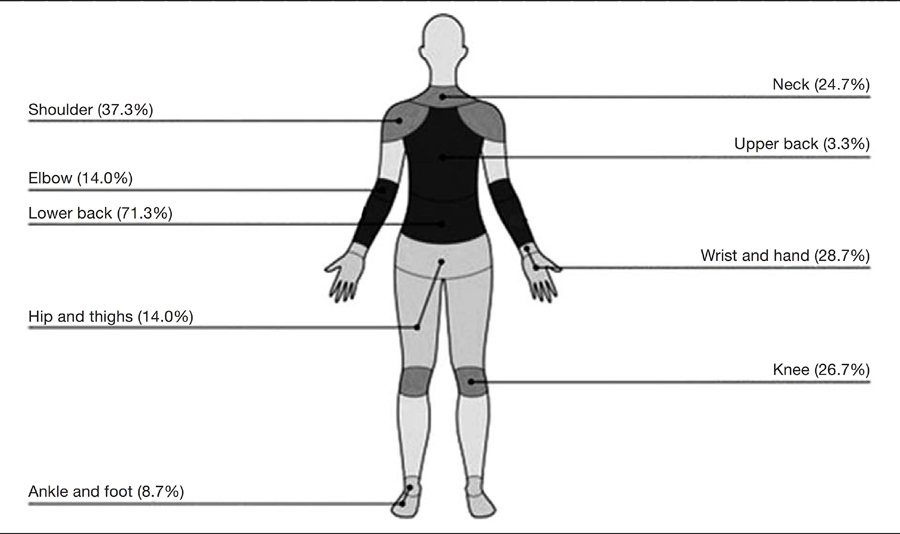Why Aren’t Chiropractic Physicians Treating More Children with Complex Diagnoses?
A Commentary on Documenting P.A.R.T. for Diagnosing and Treating Special Needs Children
SOURCE: Journal of Clinical Chiropractic Pediatrics 2019 (Nov); 18 (2)
Eric Epstein, DC, Jean Elizabeth Grabowski and Richard Duenas, DC, DABCN
Kentuckiana Children’s Center,
Louisville, KY
According to the Centers for Medicare and Medicaid Services (CMS) guidelines, chiropractors are deemed physicians in the Medicare system and for consistency throughout the term chiropractic physician will encompass chiropractor, chiropractic doctor, doctor of chiropractic and chiropractic physician. Chiropractic physicians must document subluxation of the spine through x-ray or physical examination.
The documentation of subluxation of the spine through physical examination includes the identification of two out of four criteria including:
There are more articles like this @ our:
The documentation of subluxation of the spine through physical examination includes the identification of two out of four criteria including:
Pain/tenderness,
Asymmetry/misalignment,
Range of motion abnormality,
Tissue tone, texture, and temperature abnormality (P.A.R.T.)
with at least one of the two criteria being either A or R.
Since special needs children often have difficulty expressing pain, and/or experiencing pain the way a typical child can, it is necessary to understand approaches to the special needs child that allow the doctor to evaluate and treat the child, as well as comply with insurance mandates to establish medical necessity.
The purpose of this paper is to help the doctor understand approaches to document the diagnosis/diagnoses and procedures utilized for the medically necessary care of special needs children to while remaining in compliance with the billing to 3rd party payers. A case report follows to illustrate these challenges.
Keywords: Special needs children, autism, Down syndrome, insurance compliance, Medicare, medical necessity, pediatrics, chiropractic, chiropractic physician, chiropractor.
From the Full-Text Article:
Introduction
Chiropractic philosophy and practice teach us that all dysfunction has a neurologic component. [1] By far, the greatest growth of neurologic dysfunction in children is the increasing presence of autism spectrum disorders (ASD). [2] ASD includes autism, ADD/ADHD, Rett’s Syndrome, Asperger’s Syndrome, Pervasive Developmental Delay and Childhood Disintegrative Disorder, among others. [3] Commonly, these children lack communication skills, perceive pain differently than non-spectrum children, and present with uncommon signs and symptoms not frequently seen in a chiropractic office.
As chiropractic physicians, we are comfortable with back pain, neck pain and headaches, but when a patient presents with self-stimulatory behaviors, self-injurious behaviors, digestive challenges and abnormal preferred postures, the chiropractic physician may become intimidated and decline to treat these children.
The quality of life of children challenged with these issues may be enhanced by chiropractic care. [4] Chiropractic physicians, as they often provide family care, are encouraged to expand their knowledge and practice to include these children. By providing competent chiropractic care, we demonstrate to our patients and their families and other providers that chiropractic is not limited to pain management. At Kentuckiana Children’s Center, we observe physiologic, behavioral and social improvements with the addition of chiropractic and complementary care.
This article serves to demonstrate how to comply with insurance mandates to identify Pain/tenderness, Asymmetry/misalignment, Range of motion abnormality, Tissue tone, texture, and temperature abnormality (P.A.R.T.) changes in the absence of ability to question the patient. A case report is also provided.
A common behavioral feature of autistic spectrum disorder (ASD) children is self-stimulatory activity. This activity can manifest as hand-flapping, head-banging, spinning, self-injurious behaviors, and physical attacks. [5] All of these activities have the potential of disturbing normal biomechanical function, and therefore, can cause vertebral subluxation complex (VSC). It is evident, then, that spectrum children should be regularly evaluated and treated by a chiropractic physician. It becomes necessary for the doctor to investigate and/or re-investigate palpation and observational analysis methods in the special needs population to effectively identify the presence of VSC and then develop the skill set to deliver an appropriate and effective adjustment.
Medicare guidelines require the presence of two of the four P.A.R.T. features to be present to demonstrate medical necessity. At least one of the features must be A and/or R. [6] This makes the job of the chiropractic physician easier since spectrum children cannot communicate pain in the way a non-spectrum individual can.
At Kentuckiana Children’s Center, the majority of our patients are ASD children. We also have a wide variety of children with genetic syndromes, like Down Syndrome, and other complex diagnoses that present with varying levels of function. Optimally, after an examination and differential diagnosis and treatment plan are in place, a patient is adjusted. This could happen on the first visit in an acute case or second office visit after a report of findings. We have observed when working with spectrum children, it may take several visits to establish trust so that hands-on work can be accomplished. The treatment environment must be soothing, as non-clinical as possible and quiet. Loud, bright environments are more likely to stimulate unwanted behaviors and make the treatment of the child impossible.
If the parent is accustomed to using them, the use of “social stories” before initial and subsequent visits may facilitate the child’s willingness to be treated. Social stories are pictures, videos and discussions of the steps it takes to get through an event, procedure or a day. [7] Use of these tools allows the child time to process a new experience. Once the child is accustomed to the experience, office visits become easier to manage.
It is also important to note that most spectrum children are unable to tolerate light touch. Activator checks, Total Body Modification (TBM) analysis and other techniques that involve analysis via brushing or lightly touching a body part could provoke an unwanted, and possibly violent, reaction. As much as possible, firm, intentional touch is preferred and can have a calming effect.
Once tolerance of the environment and hands-on contact is established, it is not difficult for a competent chiropractic physician to identify Asymmetry/misalignment, Range of motion abnormalities and Tissue tone, texture, and temperature abnormality. We commonly find a short leg (asymmetry), retracted scapula (asymmetry, tone), forward head carriage (asymmetry, tone), heel-to-buttock restrictions (asymmetry, tone) and limited spinal ranges-of-motion. Adjusting the ASD child, then, may be accomplished by any number of methods. We often find that children who are high functioning will tolerate Activator Method, but low functioning children will not allow this technique. Drop table adjustment mechanisms are effective, but can be very alarming. The most frequently used techniques include Diversified, Gonstead and sustained deep pressure.
Documentation is a vital component of the care of the patient as well as the Centers for Medicare and Medicaid Services (CMS) and insurance compliance. In the case of the special needs child, many aspects of the examination may not be able to be accomplished and documented. A child’s weight, height or blood pressure, for example, are often a part of the routine examination. If the record indicates that these examination features have been attempted, and an explanation of why they were not accomplished is noted, then the chiropractic physician should be well in compliance.
Ultimately, once the chiropractic physician has established rapport with the child, has a clear understanding of the case, establishes a treatment plan and obtains an informed consent from the child (if appropriate) and their parents/guardians, it is not difficult to comply with insurance mandates.
Read the rest of this Full Text article now!







Leave A Comment